Blog & Latest Updates
Fly Fishing Articles
Insects by Common Name


Mayfly Genus Eurylophella (Chocolate Duns)
Taxonomic Navigation -?-
Kingdom
Animalia (Animals)
» Phylum
Arthropoda (Arthropods)
» Class
Insecta (Insects)
» Order
Ephemeroptera (Mayflies)
» Genus Eurylophella (Chocolate Duns)
| Species in Eurylophella | ||
| Eurylophella bicolorChocolate Dun | 0 | 0 |
| Eurylophella funeralisChocolate Dun | 0 | 0 |
| Eurylophella lutulentaChocolate Dun | 0 | 0 |
| Eurylophella temporalisChocolate Dun | 0 | 0 |
10 species aren't included.
Common Name
| Match | Common Name |
| Chocolate Duns |
This is page 3 of specimens of Eurylophella. Visit the main Eurylophella page for:
- The behavior and habitat of Eurylophella.
Pictures of 22 Mayfly Specimens in the Genus Eurylophella:
Eurylophella (Chocolate Duns) Mayfly Nymph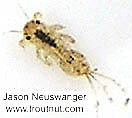 View 3 PicturesThis nymph is an extremely early instar (Instar: Many invertebrates molt through dozens of progressively larger and better-developed stages as they grow. Each of these stages is known as an instar. Hard-bodied nymphs typically molt through more instars than soft-bodied larvae.).
View 3 PicturesThis nymph is an extremely early instar (Instar: Many invertebrates molt through dozens of progressively larger and better-developed stages as they grow. Each of these stages is known as an instar. Hard-bodied nymphs typically molt through more instars than soft-bodied larvae.).
 View 3 PicturesThis nymph is an extremely early instar (Instar: Many invertebrates molt through dozens of progressively larger and better-developed stages as they grow. Each of these stages is known as an instar. Hard-bodied nymphs typically molt through more instars than soft-bodied larvae.).
View 3 PicturesThis nymph is an extremely early instar (Instar: Many invertebrates molt through dozens of progressively larger and better-developed stages as they grow. Each of these stages is known as an instar. Hard-bodied nymphs typically molt through more instars than soft-bodied larvae.).Collected February 7, 2004 from unknown in Wisconsin
Added to Troutnut.com by Troutnut on January 25, 2006
Added to Troutnut.com by Troutnut on January 25, 2006
Male Eurylophella (Chocolate Duns) Mayfly Spinner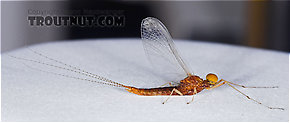 View 12 Pictures
View 12 Pictures
 View 12 Pictures
View 12 PicturesCollected June 4, 2005 from the Teal River in Wisconsin
Added to Troutnut.com by Troutnut on May 24, 2006
Added to Troutnut.com by Troutnut on May 24, 2006
Eurylophella (Chocolate Duns) Mayfly Nymph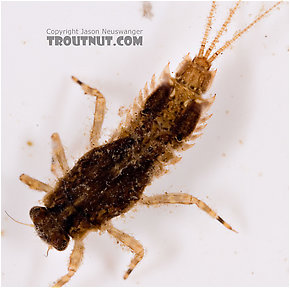 View 8 Pictures
View 8 Pictures
 View 8 Pictures
View 8 PicturesCollected May 6, 2007 from Mongaup Creek in New York
Added to Troutnut.com by Troutnut on May 18, 2007
Added to Troutnut.com by Troutnut on May 18, 2007
Male Eurylophella (Chocolate Duns) Mayfly Dun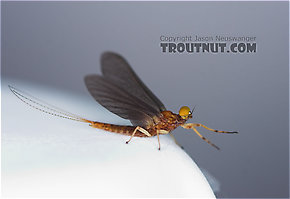 View 3 Pictures
View 3 Pictures
 View 3 Pictures
View 3 PicturesCollected June 4, 2005 from the Teal River in Wisconsin
Added to Troutnut.com by Troutnut on May 24, 2006
Added to Troutnut.com by Troutnut on May 24, 2006
Eurylophella (Chocolate Duns) Mayfly Nymph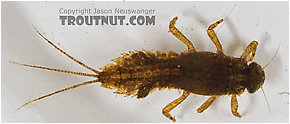 View 3 Pictures
View 3 Pictures
 View 3 Pictures
View 3 PicturesCollected June 8, 2005 from the Namekagon River in Wisconsin
Added to Troutnut.com by Troutnut on May 26, 2006
Added to Troutnut.com by Troutnut on May 26, 2006
Female Eurylophella (Chocolate Duns) Mayfly Dun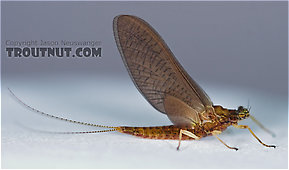 View 3 Pictures
View 3 Pictures
 View 3 Pictures
View 3 PicturesCollected June 4, 2005 from the Teal River in Wisconsin
Added to Troutnut.com by Troutnut on May 24, 2006
Added to Troutnut.com by Troutnut on May 24, 2006
Eurylophella (Chocolate Duns) Mayfly Nymph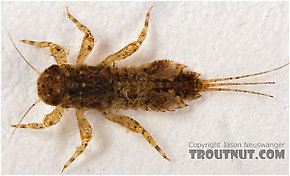 View 3 Pictures
View 3 Pictures
 View 3 Pictures
View 3 PicturesCollected March 13, 2005 from Cascadilla Creek in New York
Added to Troutnut.com by Troutnut on April 5, 2006
Added to Troutnut.com by Troutnut on April 5, 2006
Female Eurylophella (Chocolate Duns) Mayfly Spinner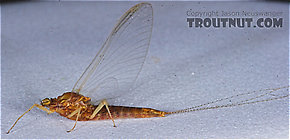 View 2 Pictures
View 2 Pictures
 View 2 Pictures
View 2 PicturesCollected June 14, 2005 from the Teal River in Wisconsin
Added to Troutnut.com by Troutnut on May 26, 2006
Added to Troutnut.com by Troutnut on May 26, 2006
Eurylophella (Chocolate Duns) Mayfly Nymph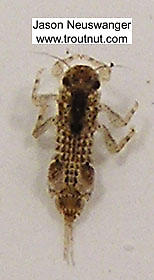 View 2 PicturesIt has the segment 4 gill and abdominal segment 9 is longer than segment 8. I couldn't see abdominal tubercles (
View 2 PicturesIt has the segment 4 gill and abdominal segment 9 is longer than segment 8. I couldn't see abdominal tubercles (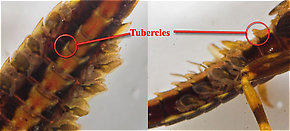 Tubercle: Various peculiar little bumps or projections on an insect. Their character is important for the identification of many kinds of insects, such as the nymphs of Ephemerellidae mayflies.), but they may not yet be developed in such an early instar (Instar: Many invertebrates molt through dozens of progressively larger and better-developed stages as they grow. Each of these stages is known as an instar. Hard-bodied nymphs typically molt through more instars than soft-bodied larvae.).
Tubercle: Various peculiar little bumps or projections on an insect. Their character is important for the identification of many kinds of insects, such as the nymphs of Ephemerellidae mayflies.), but they may not yet be developed in such an early instar (Instar: Many invertebrates molt through dozens of progressively larger and better-developed stages as they grow. Each of these stages is known as an instar. Hard-bodied nymphs typically molt through more instars than soft-bodied larvae.).
 View 2 PicturesIt has the segment 4 gill and abdominal segment 9 is longer than segment 8. I couldn't see abdominal tubercles (
View 2 PicturesIt has the segment 4 gill and abdominal segment 9 is longer than segment 8. I couldn't see abdominal tubercles (
A few (not all) of the abdominal tubercles on this Ephemerella needhami nymph are circled. They are especially large in this species.
Collected March 10, 2004 from unknown in Wisconsin
Added to Troutnut.com by Troutnut on January 19, 2006
Added to Troutnut.com by Troutnut on January 19, 2006
Top 10 Fly Hatches
Top Gift Shop Designs
Eat mayflies.
Top Insect Specimens
Miscellaneous Sites
Troutnut.com is copyright © 2004-2024 Jason
Neuswanger (email Jason). See my FAQ for information about use of my images.
 privacy policy
privacy policy
